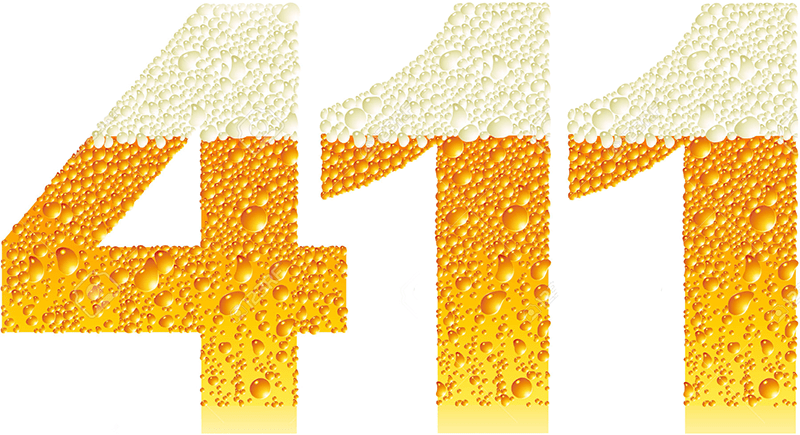 Home brewing doesn’t require you to take a whole lot of measurement or to know a whole lot about the science side of the hobby. After all, people have been making beer for thousands of years, and it wasn’t until relatively recently that anyone really understood the role yeast played in the brewing process. But in order to make good beer predictably and consistently, knowing how to control the numbers is critical.
Home brewing doesn’t require you to take a whole lot of measurement or to know a whole lot about the science side of the hobby. After all, people have been making beer for thousands of years, and it wasn’t until relatively recently that anyone really understood the role yeast played in the brewing process. But in order to make good beer predictably and consistently, knowing how to control the numbers is critical.
Below, find a breakdown of the most common home brewing measurements and figures used when making beer. Learn how to work these numbers, and your homemade beer will be all the better!
Common Home Brewing Measurements:
- Volume – One of the most basic calculations you’ll need to keep track of is volume – the amount of space your beer takes up. Overshooting or undershooting your volume measurements can have a huge impact on beer color, flavor, alcohol content, mouthfeel, and more.
- Weight – Homebrew ingredients are typically measured out by weight. A digital scale is an important tool for your home brewery.
- Temperature – Measuring temperature comes into play in several parts of homebrewing. We often try to hit a specific temperature when steeping or mashing grains. Having good control over fermentation temperature can “make or break” your beer.

- Gravity – Specific gravity is a measurement of the density of a liquid. Pure water has a specific gravity of 1.000. In brewing, gravity tells us how much dissolved solids there are in wort and in finished beer. We usually measure gravity with a hydrometer. By taking the original or starting gravity and subtracting the finished gravity, we can figure out how much sugar was consumed during the fermentation process and calculate the alcohol content of the finished beer. You’ll often hear beers called “high-gravity” or “low-gravity” (As in, “Man, I had way too many high-gravity beers last night!”). This refers to the original gravity of the beer, and by extension, the alcohol content.
- ABV – “Alcohol by volume.” Using the gravity measurements from above, we can figure out the alcohol content of beer. Take the original gravity (let’s say 1.050) and subtract the final gravity (1.010). Take that number (0.040) and multiply by 131.25 to get the alcohol content (5.25%). There are ABV calculators that can help with the math, but I find it’s easy enough just to plug the numbers into my phone.
- IBUs – “International Bittering Units.” In Europe, these may be listed as EBUs – they’re the same thing. IBUs are a figure that relates how much bitterness is contributed to a beer by hops. You can do IBU calculations by hand, but for these I usually use an IBU calculator. But in general, know that the more hops you use, the higher the alpha acid content of the hops, and the longer they are boiled in the wort, the higher the IBUs.
- Alpha Acids
 – Alpha acids, which are found in hops, are what make beer bitter. They’re expressed as a percentage of the total weight of the hops. For example, Cascade hops are typically 4.5-6% AA. You’ll often see recipes that call for a specific number of AAUs or HBUs. These stand for alpha acid units or homebrew bittering units. These are an easy way to develop consistency when alpha acids may change from batch to batch. To calculate AAUs or HBUs, take the weight of the hops (say, 1.5 oz.) and multiply by the alpha acid content of the hops (5%). That adds up to 7.5 AAUs.
– Alpha acids, which are found in hops, are what make beer bitter. They’re expressed as a percentage of the total weight of the hops. For example, Cascade hops are typically 4.5-6% AA. You’ll often see recipes that call for a specific number of AAUs or HBUs. These stand for alpha acid units or homebrew bittering units. These are an easy way to develop consistency when alpha acids may change from batch to batch. To calculate AAUs or HBUs, take the weight of the hops (say, 1.5 oz.) and multiply by the alpha acid content of the hops (5%). That adds up to 7.5 AAUs.
- SRM – SRM stands for standard reference method and is a measurement of beer color. The palest beers, like wits and pale lagers, are in the 2-5 SRM range. Anything over about 35-40 is a very dark beer. (In Europe they use the EBC scale – it’s roughly double SRM.)
- Lovibond – Lovibond is a measurement of malt color, the main contributor to beer color. Very pale pilsner or pale ale malt is usually below 5 degrees Lovibond. Some of the mid-range malts that give beer an amber or copper range from about 20 to 100˚L. The darkest malts – the chocolate malts and heavily roasted malts – tend to be in the 300-500 range. A good recipe builder will help you with the math of predicting beer color.
Other Home Brewing Measurements and Calculations
These are just some of the primary figures used in homebrewing. As you advance in the hobby, you’ll also start paying more and more attention to things like efficiency, pH, pitching rates, and attenuation. But if you have firm control over the numbers above, you’re well on your well to brewing some excellent beer!
—–
David Ackley is a writer, brewer, and craft beer marketing consultant. He holds a General Certificate in Brewing from the Institute of Brewing and Distilling and is founder of the Local Beer Blog.
